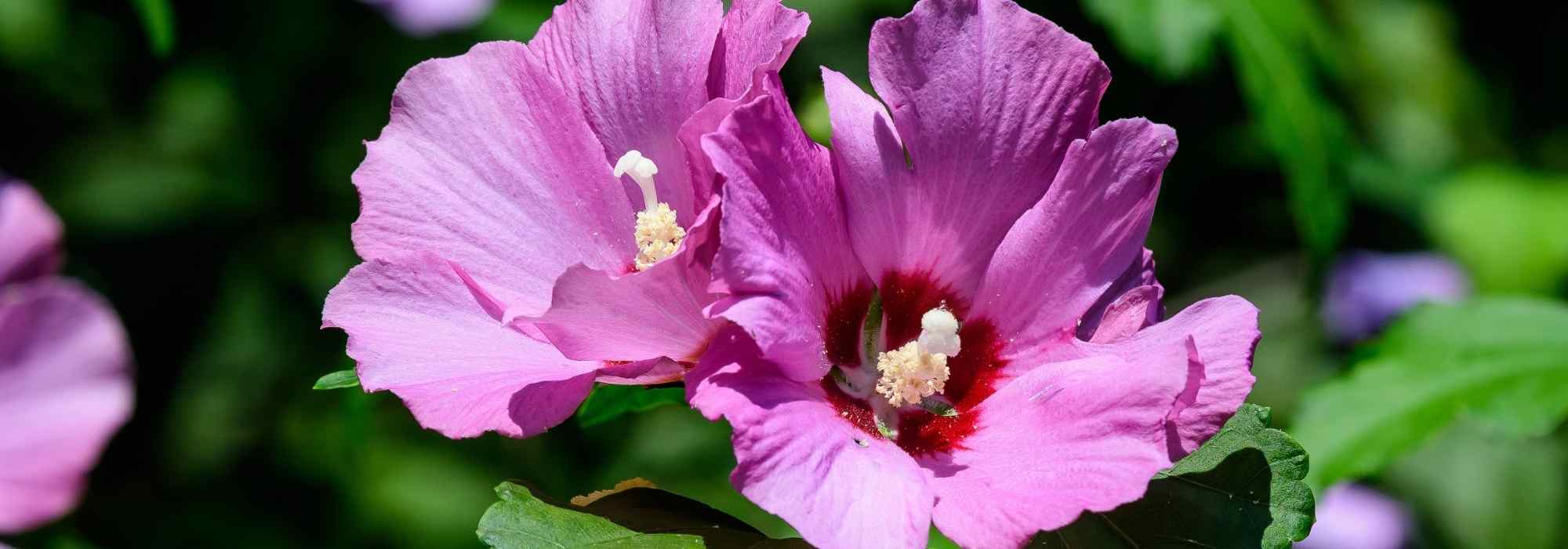
6 bushes that start late in spring
No panic: they are not dead, just a bit slow....
Contents
Some bushes have the knack of making us anxious every spring… Is my hibiscus dead? Is it normal that this Hydrangea shows no new shoots? In reality, some bushes or shrubs take their time in spring to start their growth. This allows them to avoid issues during late frosts, but it can quickly make us worry too. Especially when all the other plants around seem determined to kick off their spring.
→ Let’s take a look at this small selection of late bud burst shrubs!
Hydrangea paniculata or paniculate hydrangeas
Every year, the customer service team at Promesse de Fleurs is inundated with emails from worried customers regarding their Hydrangea paniculata that “isn’t coming back” in spring. In reality, these gardeners are simply a bit impatient. Indeed, paniculate hydrangeas need relatively mild nights to emerge from dormancy and start budding: this typically occurs only in April (sometimes late March in milder climates). Unlike classic hydrangeas that begin their growth (often too) early in the season. The comparison is quickly made by the gardener, and their concern is understandable. But all is well, rest assured!
It is probably one of the most accommodating types of hydrangeas: it grows in a wide range of soils (even calcareous!), in partial shade or full sun, and is very hardy. Its large panicle inflorescences, which are white to pink depending on the variety and the progression of flowering, bloom in the garden between summer and autumn.
Unlike the Hydrangea macrophylla (the “classic” hydrangea), the Hydrangea paniculata flowers on the wood of the year. This is beneficial, as it is less likely to lose its flowering due to a late frost, but it also means that it needs to be pruned at the right time or not at all to allow it to grow naturally. Pruning should be done in autumn or early spring, before the leaves appear.
It’s difficult to choose among all the varieties of paniculate hydrangeas, but the ‘Phantom’ variety with its giant panicles is truly spectacular, while the Hydrangea paniculata ‘Diamant Rouge’ offers very red tones as the flowers “age”.
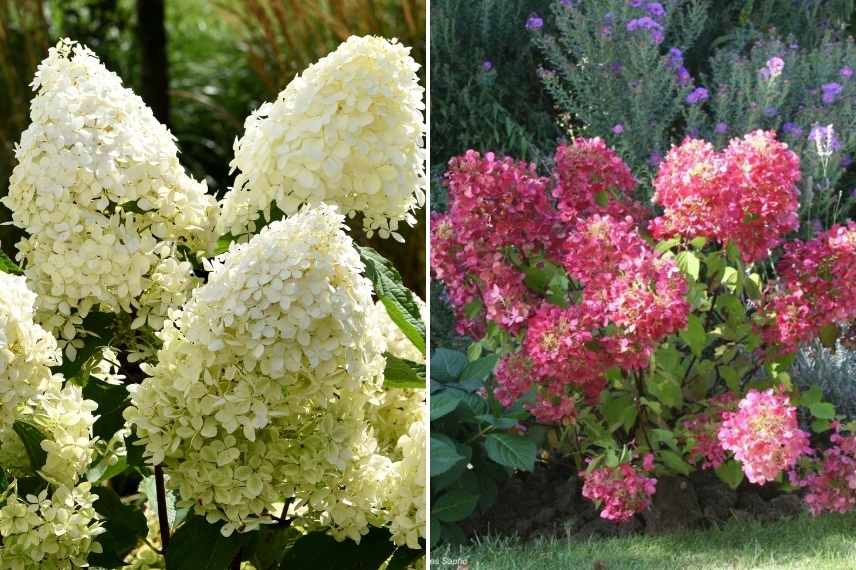
Hydrangea paniculata ‘Phantom’ and ‘Diamant Rouge’
Read also
6 late-flowring spring perennialsHibiscus or Althaea
Hibiscus, particularly hybrids of Hibiscus syriacus, are not among the earliest bushes in the garden. The bud burst period, meaning the appearance of new foliage, occurs only in May, sometimes even early June in the colder areas.
Hibiscus buds late, but also flowers late. It is indeed a reliable choice to brighten up the end of summer and the beginning of autumn: its flowering occurs between August and October, even into November. The flowers can be single, in white, pink, red, purple, or even blue-mauve, as seen in Hibiscus ‘Oiseau bleu’. However, there are increasingly more varieties with double flowers, such as ‘French Cabaret’, or semi-double varieties like ‘Starburst Chiffon’.
Hibiscus are very hardy and trouble-free bushes. With a relatively slow growth rate, they should be planted in rich, cool, but well-drained soil in a sunny position, although they can tolerate partial shade.
→ Discover our wide range of Hibiscus in our online nursery.
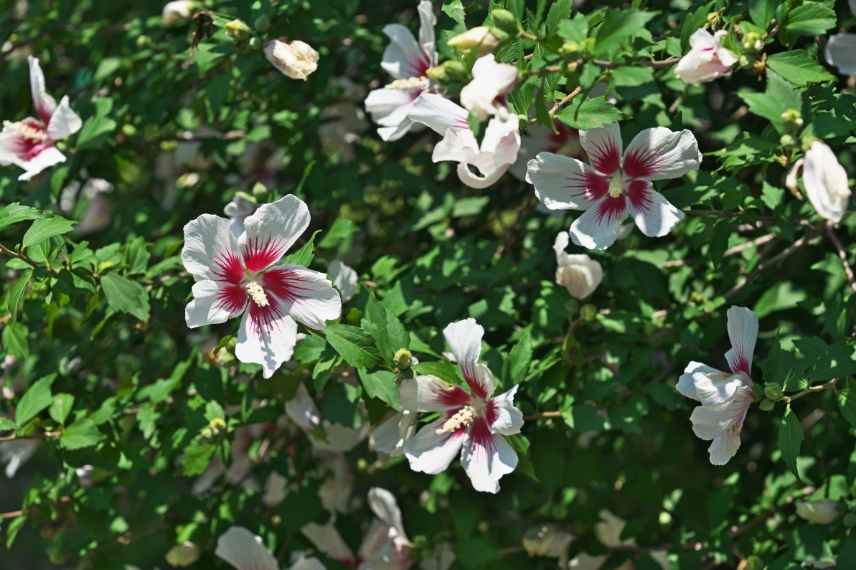
Hibiscus syriacus
Discover other Shrubs
View all →Available in 0 sizes
Available in 0 sizes
Available in 0 sizes
Available in 1 sizes
Available in 1 sizes
Available in 1 sizes
Available in 1 sizes
Available in 1 sizes
Available in 1 sizes
Available in 1 sizes
Perovskias or Russian Sage
From a distance, perovskias resemble lavenders or nepeta, sharing the same botanical family: the Lamiaceae. From the tall Perovskia atriplicifolia ‘Blue Spire’ (1.20 m high) to the more compact Perovskia ‘Little Spire’ (80 cm), perovskias are shrubs that bloom between July and September with azure inflorescences measuring 20 to 40 cm long.
Their beautiful silvery and aromatic foliage only begins its growth around April. So, there’s no need to worry if you don’t see anything growing before spring is well underway. Therefore, it will be necessary to prune it to maintain a compact shape in February or at the latest in March.
Perovskias thrive in full sun and dry, even poor soils. Perfectly hardy and resistant to sea spray and diseases, the only thing this undershrub, sometimes considered a woody perennial, fears are heavy and poorly drained soils.
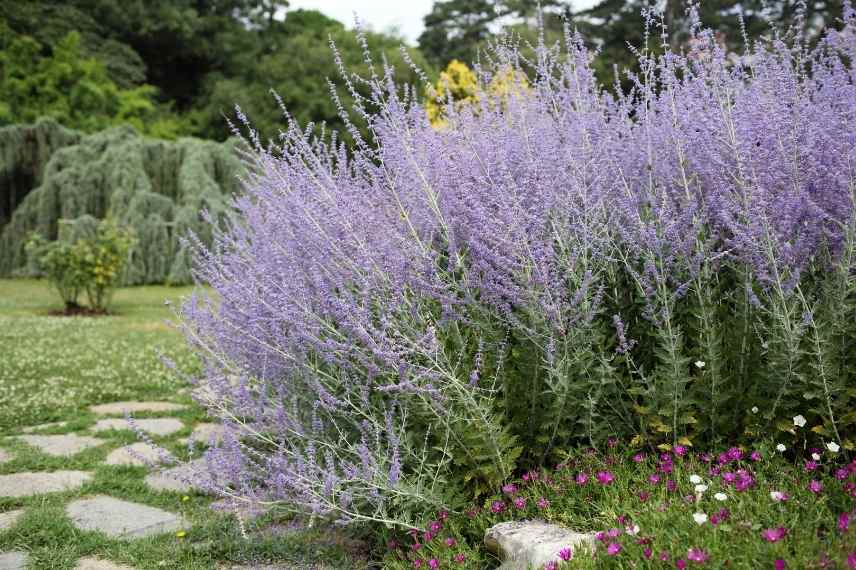
Perovskia atriplicifolia
Caryopteris or Blue Spireas
Caryopteris or Bluebeard is a small shrub with aromatic foliage that is often silver, but sometimes variegated with cream (Caryopteris divaricata ‘Electrum’) or yellow (Caryopteris ‘Summer Sorbet’), with flowering occurring at the end of summer. Indeed, the main advantage of Caryopteris is its ability to bloom continuously from August to October in the form of cut flower arrangements, most often blue, sometimes pink depending on the varieties (Caryopteris X clandonensis ‘Stephi’).
Its beautiful deciduous foliage also adds a lovely splash of colour. However, it should be pruned back before the resumption of growth that occurs in early April.
Like Perovskia, Caryopteris thrives in full sun in well-drained, even dry soil. It is quite hardy and easy to grow as long as it is not planted in overly heavy soil.
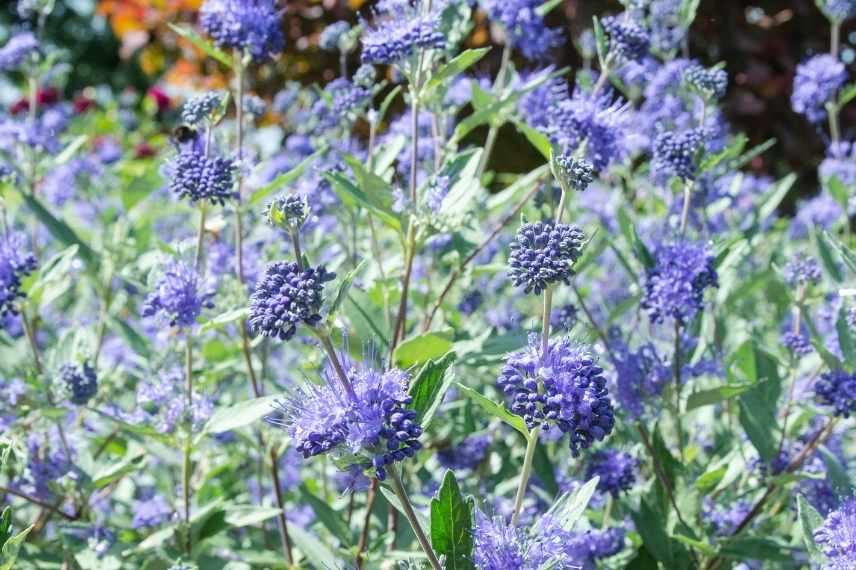
Caryopteris
Vitex or Chaste Trees
Forgotten for a few years, the Vitex agnus-castus or Chaste Tree is making a comeback in our gardens. It is a bush that is easy to grow, offering a long late flowering period (July to October), aromatic foliage, and edible fruits that can be used as a substitute for pepper, hence its other names: Monk’s Pepper or Pepper Tree.
The Chaste Tree blooms in late summer with numerous panicles of blue, mauve, or white flowers depending on the variety: for example, the Vitex agnus-castus ‘Albus’ blooms white, while the Vitex agnus-castus ‘Pink Pinnacle’ produces pink flowers.
The deciduous foliage only starts to grow around April. This can sometimes be remarkable depending on the variety. For instance, the Vitex ‘Flip Side’ features dark green leaves with a purple underside.
Quite hardy (down to -15 °C), the Vitex thrives in full sun in well-drained soil. It should be planted in a warm location, sheltered from cold, drying winds.
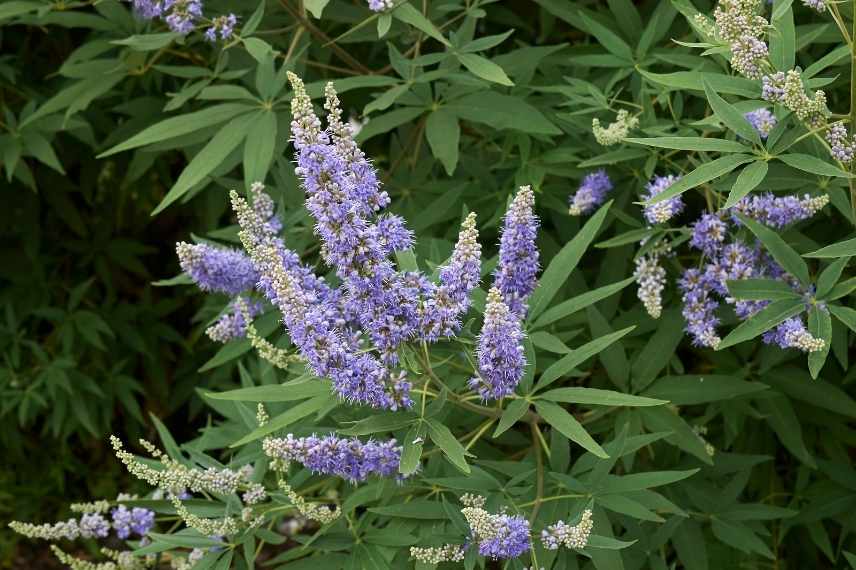
Vitex agnus-castus or Chaste Tree
Lagerstroemias or crape myrtles
The Lagerstroemia indica or Crape Myrtle is beautiful all year round thanks to its flowering, autumn foliage, and attractive bark. The pink, red, purple, or white flowering of this bush begins in July and can continue until October.
Its slightly twisted habit and satin-like bark, in a cinnamon colour marbled with soft pink and cream tones, are revealed for much of the winter and into early spring, as the foliage appears late, starting in April. Although it takes its time, the foliage is impressive: dark green in season, turning to vibrant red in autumn. Some varieties even produce very dark foliage, almost black, which enhances the bright colours of the flowers, such as Lagerstroemia indica Black Solitaire ‘Shell Pink’.
Quite hardy (-15 °C), the Lagerstroemia prefers warm and sheltered situations in rich, rather cool, but well-drained soil.
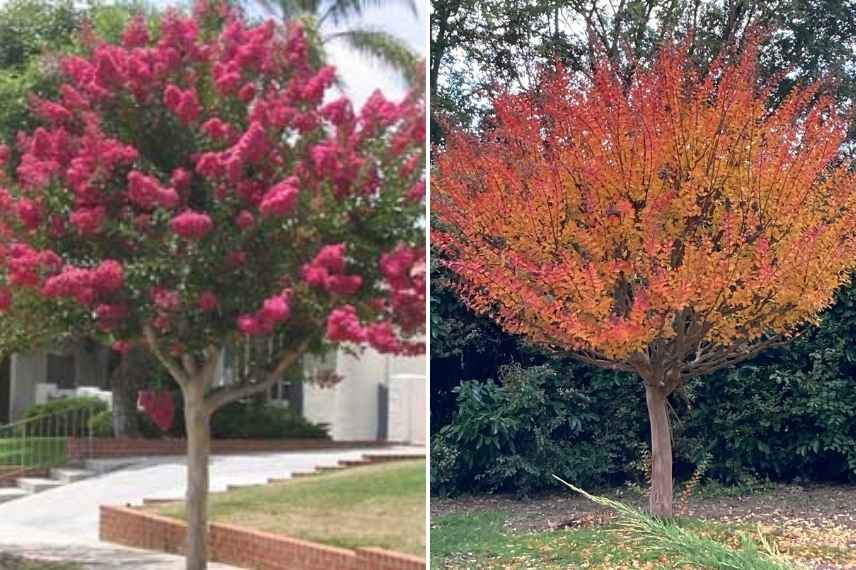
Lagerstroemia indica: in bloom in summer, and autumn colouring
- Subscribe!
- Contents
































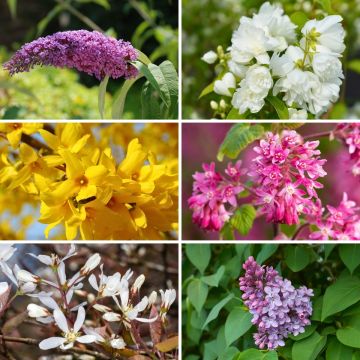
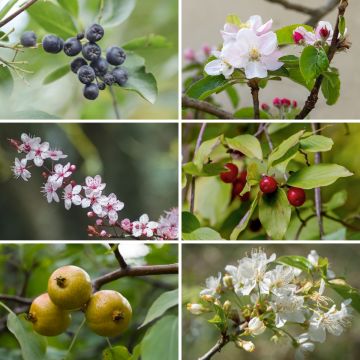
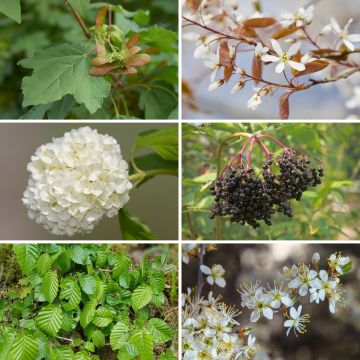
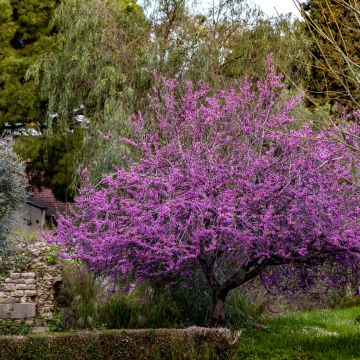
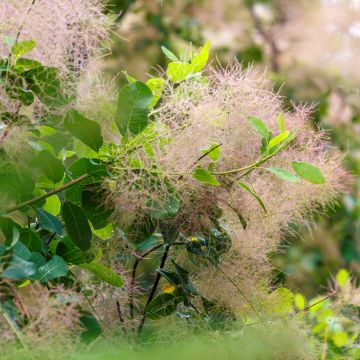
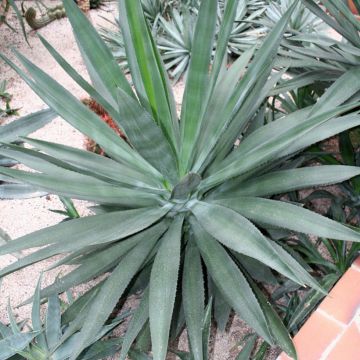
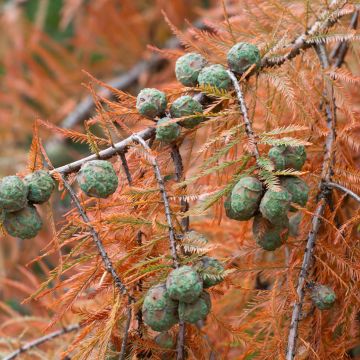

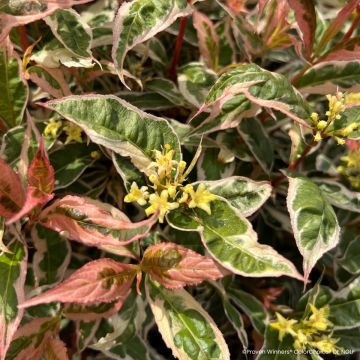

Comments